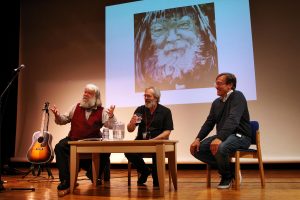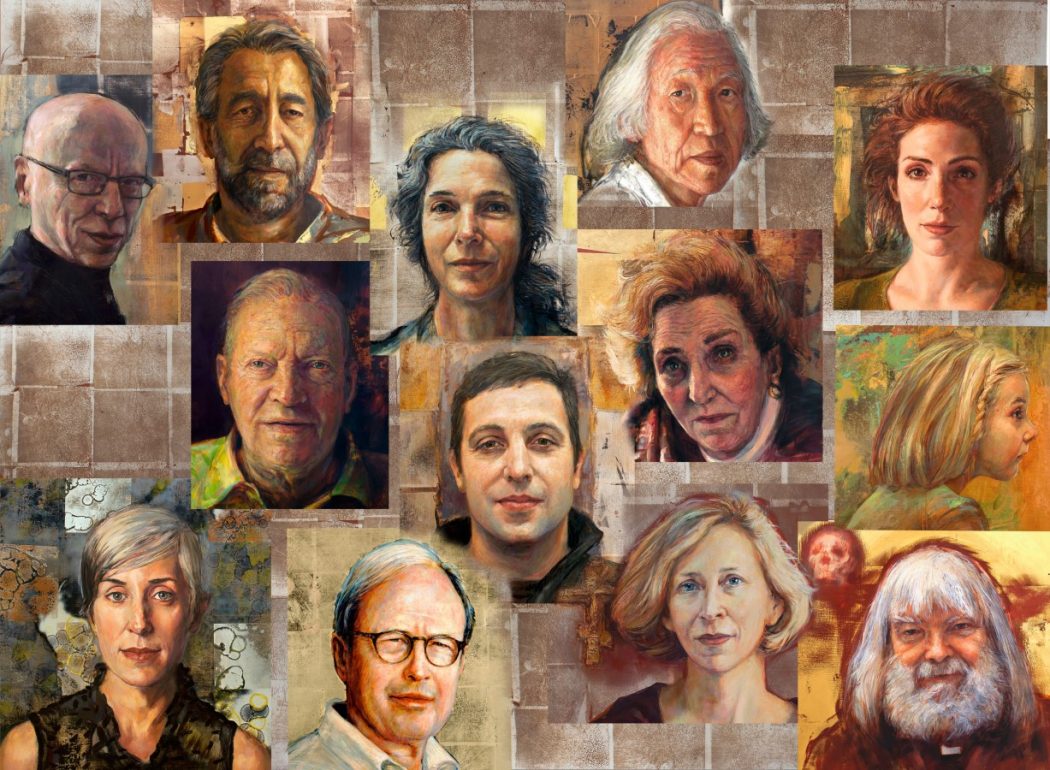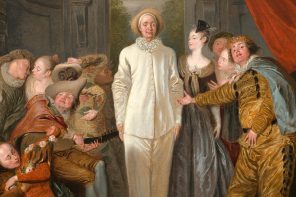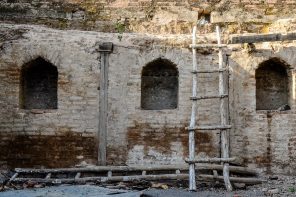[ EDITOR’S NOTE – RE-MEMBERING SERIES LAUNCH: In light of division around the world, fractured culture and politics, protests, injustice, and cheap gestures towards unity, we are launching an ongoing series to coincide with the beginning of Lent to consider a wider view of what Christian hope looks like. To this end, we will feature an array of perspectives and ask: how does our hope inform our protest against injustice? How does it inform efforts towards real (difficult) peacemaking? In considering how we might re-member what has been torn apart, we will consider what accountability might look like and what true reconciliation means, through the lens of the arts and imagination.]
‘There are no ordinary people. You have never talked to a mere mortal. Nations, cultures, arts, civilizations—these are mortal, and their life is to ours as the life of a gnat. But it is immortals whom we joke with, work with, marry, snub and exploit—immortal horrors or everlasting splendors.’
– C S Lewis, Weight of Glory [1]
Injustice. Deception. Corruption. Division. Riots.
So much of our fragility and brokenness is laid bare in these words and we are reeling as nations because of their presence in our world. Our mortality is being exposed, not just the tangible frailty of it as individuals, but the frailty of our systems of government, our leadership models, our way of life, our relationships with one another.
I find myself reeling from this as well and asking, can we ever find our way again? Can we find who we are again? In the complicated cacophony of chaos that seems to have erupted everywhere, can we find the path that leads us to peace, justice, truth, integrity? To reconciliation?
Yes, I believe we can. But it may not be in the way that seems intuitive.
Sure, we could check out well-written books on these topics, subscribe to newsletters or podcasts that address these issues and offer sound solutions. We can open ourselves up to other perspectives. Generally, that’s a good idea. But I find that even with all of this good information, it doesn’t gain any traction if I haven’t looked to my own life for where to begin.
It’s fair to say, when we wade through the labyrinth of issues facing us today, the origin of most of them can be traced back to a lack of connection and true regard for one another. Let’s sit with that for a moment…
Injustice. Deception. Corruption. Division. Riots.
All would cease to exist if we actively held true regard for each other. If we made a steady practice of knowing and engaging the stories of each other.
Engaging Story
In engaging the story of another, we do away with preconceived ideas we held before, because this person is now filling in the details for us of who they actually are. And in these details, we see areas of strength, inspiration, and commonality. We often discover a resonance where once there was resistance. A sudden empathy where once there was enmity. A reflection where once there was rejection. Stories offer us a peek into who someone truly is and remind us that at the core there is more that knits us together than tears us apart. It is here that the common ground, which is always present beneath the surface, is once again revealed.
Art as a Story Sharing Medium
A surprising illustration of this is the Humans of New York[2] project, the immensely popular U.S. photoblog capturing the lives of New York residents.
What started out as one artist capturing candid portraits of people from different ethnicities and walks of life has become a living art exhibition that viewers take in on their phones, in their cubicles, in their living rooms. In a few short years, this project has gone global, boasting over 20 million followers on social media, launching substantial philanthropic work, producing a web-series as well as coffee table books, and much more. But why? Because, though the photographer began by simply capturing images of people walking by, it didn’t take long for him to begin engaging in the stories of his subjects. And it was in their stories that people found connection. It was no longer just an image of anyone you would see on the streets of New York. It was someone. Someone who had been an English teacher, or someone who had left everything in their country of origin to start a new life, and so on. As readers clicked on the posts, they engaged the stories of these individuals and found connection, community and camaraderie. It caught on like wildfire.
The need for story is embedded in who we are as human beings. We need to engage in story—as the popularity of this art exhibit demonstrates—but also, we need to embody story. Yes, we need to embody story.
Embodying Story as an Act of Incarnation
Whether we are aware of it or not, we have by our very existence, been grafted into the Great Story that is unfolding around us and unfurling within us. Our story reflects back to us that we are each uniquely made in the image of the same, multi-faceted God. It is His Story within us that we are living out every day of our lives. When we begin to see God reflected in another, we engage a deeper identity—in ourselves as well as in them. This identity is the very thing that brings all people—every nation, tribe and tongue—together, and makes reconciliation possible. It is the identity of image-bearer. Imago Dei.
Imago Dei Reflected in Art
In October 2018, three renowned artists – each in different fields of artistic discipline premiered a collaborative art exhibition titled, Ordinary Saints[3]. Painter Bruce Herman, poet Malcolm Guite and composer J.A.C. Redford brought their unique skills together into a singular event unveiling the result of a multi-year project. They offered a layered storytelling experience using masterful painting, poetry, and musical compositions performed live, bringing into collective focus, an often hidden but ever-present truth: There are no ordinary mortals.

Ordinary Saints
By Malcolm Guite
The ordinary saints, the ones we know,
Our too-familiar family and friends,
When shall we see them? Who can truly show
Whilst still rough-hewn, the God who shapes our ends?
Who will unveil the presence, glimpse the gold
That is and always was our common ground,
Stretch out a finger, feel, along the fold
To find the flaw, to touch and search that wound
From which the light we never noticed fell
Into our lives? Remember how we turned
To look at them, and they looked back? That full-
-eyed love unselved us, and we turned around,
Unready for the wrench and reach of grace.
But one day we will see them face to face.[4]
In this exhibition, Bruce Herman created hauntingly detailed portraits of his inner circle of friends and family (featured as the banner image for this article). We see them as the artist sees them. Accompanied by Malcolm Guite’s illuminating poetry, we are drawn into a deeper truth residing with each one. Overlaid by J.A.C. Redford’s stirring compositions, we are made cognizant of a reality here that bears the weight of divine intent, made manifest only by mortal demonstration. The story embedded within every person holds the balance of divine and mortal identity. This balance is what we wrestle with and against daily.
The Light We Never Noticed, J.A.C. Redford
However, it isn’t enough to simply know this within ourselves or even in others. As we seek to engage and embody this divine identity, we must work it out through the messy, earthen vessel of our mortal identity. These dual identities can feel greatly at odds but we have the example of Jesus who went before us. In the fullness of His divine identity, Christ came and fully engaged our story and by so doing, became our Hope of reconciliation to the Father. This living Hope of reconciliation—of our dual identities and to each other—is what lives within us now. It is the story that is ours to bring to the world.
Our great privilege and challenge is to tell the story through the frailty of our own mortality and to look for this same balance being lived out in those around us.
This call is reflected to us in Ordinary Saints: Epilogue by Malcolm Guite.
Ordinary Saints: Epilogue
By Malcolm Guite
And now we turn our eyes from wood and paint
To contemplate the saints in flesh and blood,
The ones who’ve seen these pictures with us. Faint
Traces of God’s image, and his glad
Presence in humanity, have shone
Awhile for us in paintings on a wall,
The dark glass brightened, and the shadows gone.
How shall we know each other now? Will all
That we have seen recede to memory?
Or is our sight restored, and having gazed
On icons in this place, will clarity
Transfigure all of us? We turn, amazed,
To see the ones beside us, face to face,
As living icons, sacraments of grace.[5]
Reflective Questions:
Lord, how can I better ‘see the ones beside us, face to face, as living icons, sacraments of grace?’
How are you asking me, Lord, to walk out this dual identity in the lives of those around me?
Whose story can I engage with today that I have not previously?
How can I hold the balance of a divine identity and a mortal identity in my heart, mind and daily life?
This Lent, what can I set aside that will help me lean into this dual identity more and embrace it?
With gratitude to Bruce Herman, Malcolm Guite, J.A.C. Redford and Lancia E. Smith for granting their kind permission to share their work here.
Image and Music Credits
Featured image: Ordinary Saints, The Ones We Know ©Bruce Herman, 2018. Photo-montage of oil painting portraits of the artist’s friends and family. www.bruceherman.com
Photo image © Lancia E. Smith. The Cultivating Project at www.thecultivatingproject.com.
‘The Light We Never Noticed’ (from Ordinary Saints)
Music by J.A.C. Redford
Copyright 2017 by J.A.C. Redford.
All rights reserved. Used by permission.
Notes
[1] Lewis, C.S. (Clive Staples), The Weight of Glory: And Other Addresses, New York: HarperCollins Publishers, 2001, pp. 46.
[2] Humans of New York, https://www.humansofnewyork.com
[3] Ordinary Saints, https://ordinary-saints.com
[4] From Ordinary Saints, by Rev. Dr Malcolm Guite, https://ordinary-saints.com/the-program/, © 2018 Rev. Dr Malcolm Guite.
[5] From Ordinary Saints: Epilogue, by Rev. Dr Malcolm Guite, https://ordinary-saints.com/the-program/, © 2018 Rev. Dr Malcolm Guite.






Wonderful piece Pahtyana, I am very proud of you and the writer you’ve become. Great offering for the request from the University. Loved reading it.
Thank you so much! I’m glad you enjoyed it. 🙂